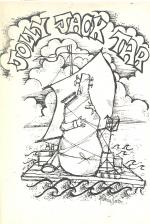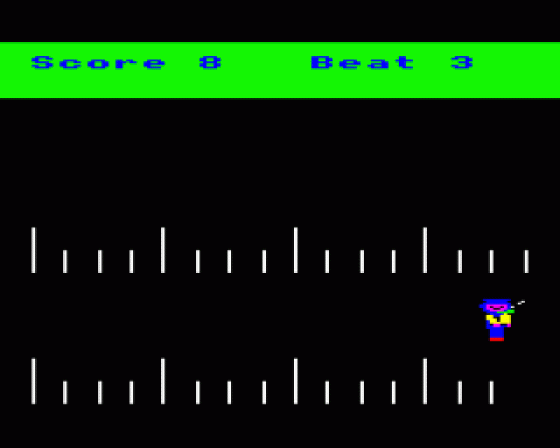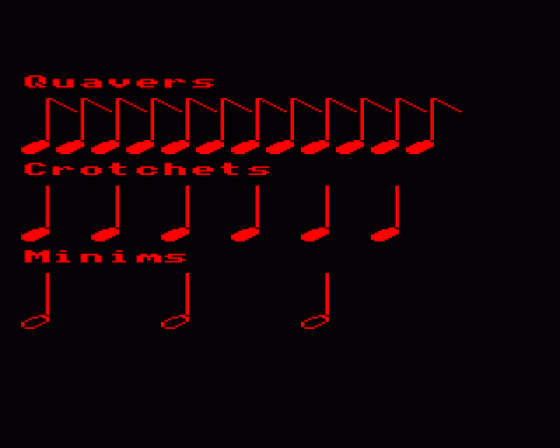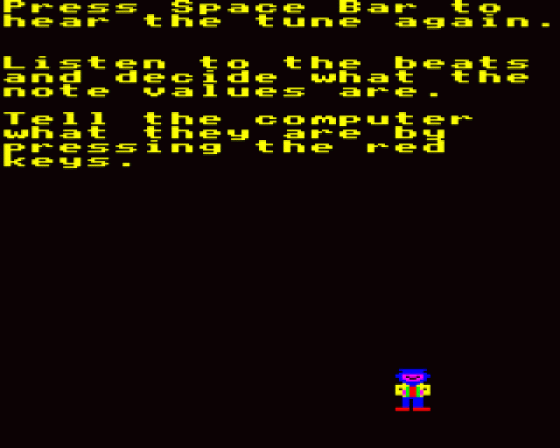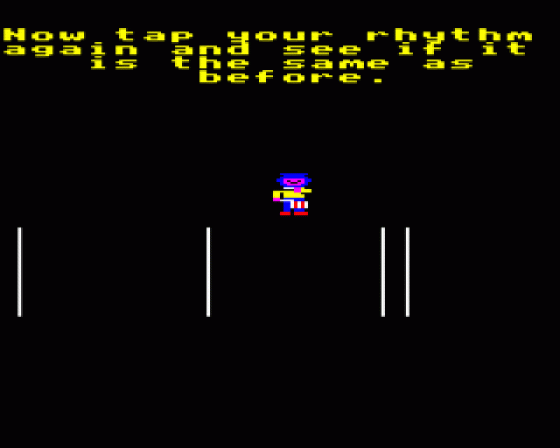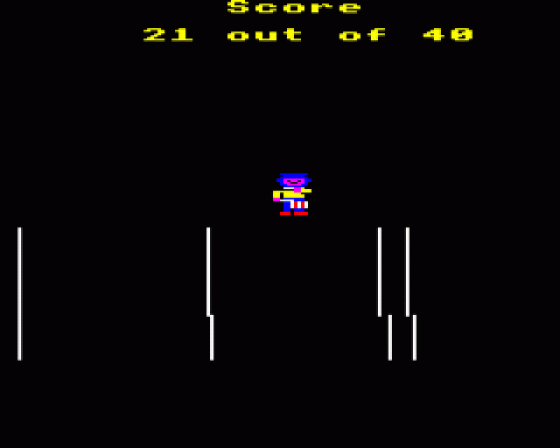
A&B Computing
 1st December 1986
1st December 1986
Categories: Review: Software
Publisher: Sherston Software
Machine: BBC B/B+/Master 128
Published in A&B Computing 3.12
Jolly Jack Tar (Sherston Software)
Most recent music issues have done little to encourage music departments to make use of the micro, one of the main problems being the BBC's diminutive speaker. Sherston's package does not rely on power of output or the sound quality but presents a series of attractively presented music exercises to develop music skills in rhythm and pitch.
In addition to simple (or not so simple!) games the programs include demonstrations which may be used by the teacher as a teaching aid. The teacher control options are a very important aspect of the programs as children's musical aptitude varies very greatly and the astute teacher will probably wish to preselect game levels for the players. Throughout I found I had to set the volume setting at its highest level for normal classroom use.
Records of the children's results are also kept and this is a useful facility which enables the programs to be used diagnostically. All the games seem to have positive teaching applications rather than being mere reinforcement exercises.

In Beats the user has to beat time on the spacebar to a variety of tunes from the melody bank. Most children find this quite easy but were challenged more by beating the first beat in Bars. When this option is set to five (hard) on the difficulty scale the leeway is so critical as to make it very difficult to get a perfect score and quite challenging for adults to attain 80%. Note Values asks the children to write the note values heard in one or two bars of music. These are written on the screen using the red function keys which are set for quaver, crotchet and minim. Unlike other music programs I have reviewed, care has been taken here to exactly differentiate crotchet and minim lengths. Incorrect attempts are played again and the notes shown beneath the original attempt.
The Rhythm Game is much more difficult than anything else on this disc. I could not manage anything greater than 85% in my scores and other musical colleagues were similarly unsuccessful. The problem lies in the fact that rhythms typed in have to be repeated exactly in the original tempo as well as being ratiometrically equivalent. Perhaps the writers would like to tell us how successful they were! Despite the rather severe frustration level encountered here, this is still a very valuable exercise.
Pitch is a rather ordinary "higher" or "lower" exercise that I've seen better done elsewhere (e.g. Micropitch). I would have liked some extra graphical help with this exercise.
Reading Music introduces the notes from Middle C up one octave. This is a useful exercise and I would have liked an option to hide the stave so that aural skills only could have been exercised. One complaint - after the initial demo screen the buffer isn't cleared and impatient fingers cause the second screen to flash past before it can be read. I liked the slow introduction of just three notes in the easy level which can be incremented through the five levels.
Overall though, this is a superb music package with many possible uses especially for those in the early stages of learning an instrument.

